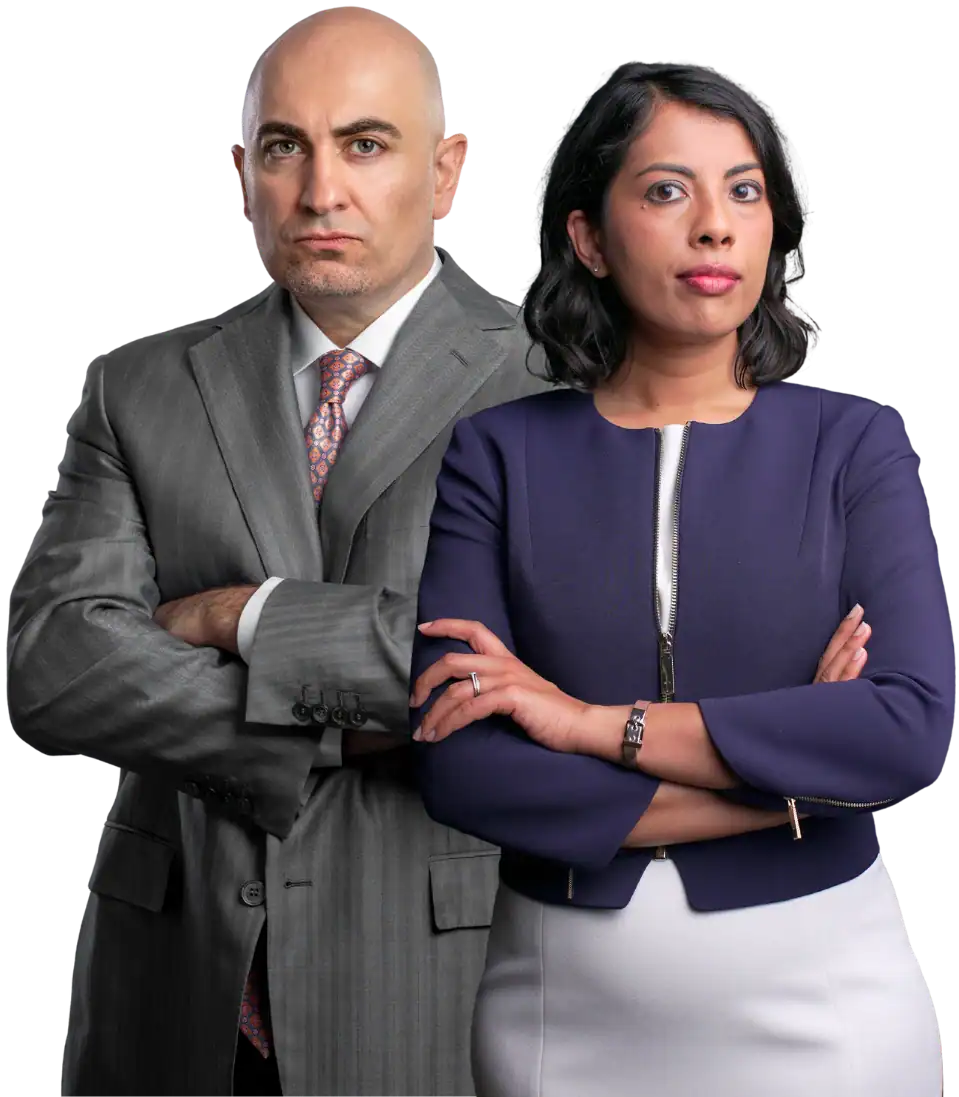Attorney advertisement by Edwin Aiwazian of Lawyers for Justice, PC, headquartered at 450 N Brand Blvd, Glendale, CA 91203
Proving you’ve been wrongfully terminated is more challenging than many employees expect. Employers can often cover their tracks by offering false but legitimate reasons for letting an employee go, like attendance issues, poor performance, or personality differences. Unless you can produce convincing evidence otherwise, it may be difficult to hold your employer legally responsible—or recover financial compensation.
In this blog post, we’ll discuss some strategies employees can use to build a strong wrongful termination case. Keep in mind: No two cases of unlawful firing are alike. If you have specific questions about how to prove wrongful termination, it’s best to reach out to an employment lawyer for help.
What Is Wrongful Termination?
Since California is an at-will employment state, employers generally have the right to fire employees for any or no reason at all. However, the law makes it illegal for employers to terminate employees under specific circumstances. These include terminations:
- Motivated by discrimination,
- In retaliation for reporting workplace wrongdoing,
- That violate the terms of an employment contract, or
- That punish employees for refusing to commit an illegal act.
The way you prove your wrongful termination case depends on the reason you were illegally fired in the first place. Showing that your employer acted out of illegal racial discrimination will require different evidence than showing that your employer broke your employment contract.
What Evidence Do I Need for Wrongful Termination?
Two basic types of evidence can help prove wrongful termination: direct evidence and circumstantial evidence.
Direct evidence is any documentation that provides clear proof that you were fired illegally. It’s straightforward and requires no additional evidence to show that your employer broke the law. In a wrongful termination case, direct evidence is the strongest and most valuable proof. It’s also often a challenge for employees to come by.
It’s much more common for employees to rely on circumstantial evidence to prove their wrongful termination. Circumstantial evidence doesn’t prove a fact directly. Instead, it requires extra evidence and explanation to verify something is true. For example, suppose you’re fired because of “performance concerns” that only began after you told your supervisor that you are pregnant. In this case, your past positive performance reviews could be used as circumstantial evidence of illegal discrimination. When it comes to circumstantial evidence, more is always better.
How to Build a Case to Prove Wrongful Termination
Generally, it’s on you as the employee to show that there’s a connection between your firing and your employer’s illegal action.
In many cases, your employer may have a false (but legal) reason to justify your termination. As the employee, you need to show that this justification is a pretext, i.e., a disguise for the true, illegal reason you were fired.
Whatever your situation, there are some important steps that all employees can take to protect themselves and strengthen their case for wrongful termination.
1. Document Your Communication with Your Employer
Your employer’s own words are a valuable resource when proving a pattern of discrimination or retaliation. Keep a record of all your communications with your boss: emails, letters, digital messages, memos, etc.. Pay attention to messages that address any alleged performance issues or other conflicts in the workplace.
2. Collect Evidence of Your Performance
Your employee record can help challenge an employer’s claim that performance issues justified your illegal firing. Request a copy of your personnel file and make copies of important documents like performance reviews or disciplinary records. Make sure you also have physical copies of all pay stubs and time sheets. If you receive digital copies of these through an employer’s human resources software, you may lose access to them after termination.
3. Create a Timeline
Writing out a detailed chronology of the events around your firing is also helpful. Record what interactions or communications passed between you and your employer before you were let go. A timeline can help clarify the connection between your termination and any illegal action, e.g., if you reported an unsafe working condition to your supervisor and were fired just a few days later. Write this all down while the events are still fresh in your mind.
4. Keep Careful Records
Ensure you have a copy of any documents relevant to your job duties and behavior, including your employment contract, company handbook, and termination letter. If you didn’t receive a termination letter, you can email your employer to request one that includes the official reason for your firing. If you’ve made internal complaints about workplace issues, make sure you save them. It can also be helpful to make detailed notes of any other events and discussions you remember that are relevant to your case.
5. Contact Eyewitnesses
Eyewitness testimony can be very valuable in proving your claim. Get the contact information of anyone in the workplace who can speak to your past work performance or the circumstances around your termination. People who’ve observed other incidents of discrimination or retaliation can also be valuable resources. You can reach out to coworkers, supervisors, and anyone else in the workplace with firsthand knowledge.
6. Speak with a Lawyer
The guidance of an employment attorney is one of the most valuable tools for anyone trying to prove wrongful termination. An experienced wrongful termination lawyer can listen to your story and help you understand the evidence most compelling to your case. They can also help you identify and gather valuable forms of evidence that may otherwise be overlooked.
Crucially, an attorney can also help you prepare to demonstrate the connection between the evidence and your claim against your employer. This is an essential step in any successful wrongful termination claim. An attorney can help you craft a clear, logical case narrative that illustrates how your firing was unlawful. They can also anticipate any potential counterarguments your employer may present and help you prepare to disprove them.
Don’t Wait to Get Help with Your Wrongful Termination Lawsuit in California
Successful wrongful termination cases require a high amount of planning and preparation on the part of employees. Waiting too long to gather evidence and take action can have dire consequences. California employees considering a wrongful termination lawsuit have only three years to file an initial complaint. If you wait too long to gather evidence and take action, you can risk losing out on any chance to get restitution.
If you’ve been illegally fired, understanding how to prove wrongful termination is just the start of the battle. At Lawyers for Justice, PC, we have the extensive knowledge and experience necessary to help employees take the next step on the road toward legal recovery after an unlawful termination. For the past 16 years, we’ve helped support employees who’ve been wrongfully fired to stand up to an employer’s mistreatment and win thousands of dollars in financial compensation. Contact our office by phone or online to speak with a lawyer today about your case.
Attorney advertisement by Edwin Aiwazian of Lawyers for Justice, PC, headquartered at 450 N Brand Blvd, Glendale, CA 91203
Think you deserve justice?
-
Get a Free Case Evaluation
-
Retain Service with No Upfront Cost
-
Get the Justice You Deserve
-
No Win, No Pay









